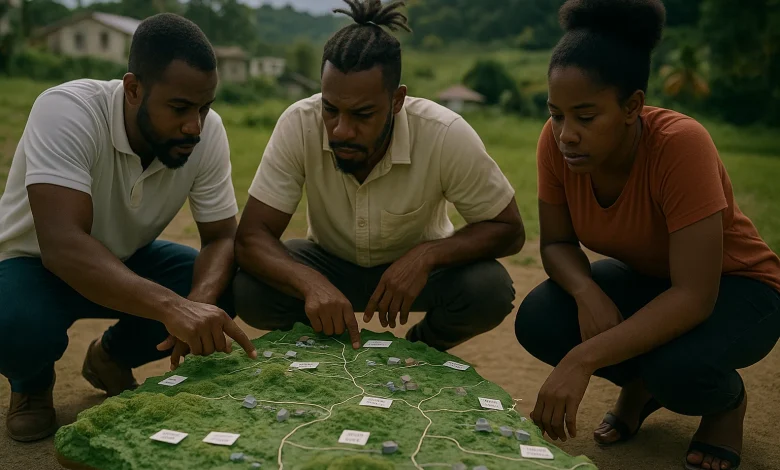Electoral Districts of Dominica

The Electoral Districts of Dominica form the foundation of the island’s parliamentary democracy, providing the framework through which representatives are elected to the House of Assembly. These districts, also referred to as constituencies, ensure that citizens across the island have equal access to political representation within Dominica’s first-past-the-post electoral system.
Structure and Framework
Dominica is divided into 21 single-member electoral districts, each returning one elected representative to the House of Assembly. These districts vary in size and population, balancing both urban centers and rural communities. The structure is guided by the Constitution and the House of Assembly Elections Act, which provide the legal basis for the creation, review, and adjustment of boundaries.
Each electoral district is further divided into polling districts and polling divisions. These subdivisions are critical for organizing the electoral roll, assigning polling stations, and ensuring efficient election management.
Constituency Boundaries Commission
Oversight of district boundaries falls under the Constituency Boundaries Commission, which is mandated to review constituency lines to reflect demographic changes. The Commission considers geography, natural features, and community cohesion, alongside population distribution, when recommending changes. Boundaries must be approved by Parliament before being implemented.
List of Electoral Districts
The following list outlines Dominica’s 21 electoral districts, each forming a unique constituency that balances rural and urban communities while ensuring nationwide political representation in the House of Assembly.
- Castle Bruce Constituency: Covers Castle Bruce and surrounding communities; traditionally agricultural, with fishing and farming as main livelihoods, and strong cultural ties in Dominica’s east coast.
- Colihaut Constituency: Stretches along Dominica’s west coast; villages rely on fishing, small-scale farming, and growing eco-tourism, with historical roots in colonial plantation settlement.
- Cottage Constituency: Northern constituency encompassing Cottage, Capuchin, Clifton, and Toucari; traditionally agricultural and fishing-based.
- Grand Bay Constituency: Known as Berekua, a strong cultural hub in the south; significant in music, politics, and community life, combining agriculture and artisanal traditions.
- La Plaine Constituency: Southeastern district with La Plaine, Boetica, and Delices; characterised by rugged coastline, farming, fishing, and resilience after natural disasters like Tropical Storm Erika.
- Mahaut Constituency: Mix of industrial, residential, and farming communities; includes Jimmit and Tarreau, hosting key businesses and linking northern and southern regions of Dominica.
- Marigot Constituency: Dominica’s second-largest village, includes the island’s Douglas-Charles Airport; stronghold of farming, fishing, and a traditional United Workers Party base in politics.
- Petite Savanne Constituency: Formerly centered on Petite Savanne; depopulated after Tropical Storm Erika in 2015, leading to community relocation and absorption into neighboring constituencies.
- Portsmouth Constituency: Anchored by Dominica’s second town; includes Picard, Zicack, and Chance; hub for education (ROSS University legacy), agriculture, trade, and yachting tourism.
- Roseau Central Constituency: Covers Dominica’s capital core; includes financial, administrative, and commercial institutions, with dense population and critical political influence in national affairs.
- Roseau North Constituency: Encompasses northern suburbs of the capital; residential and industrial, including Bath Estate and Goodwill, with strong electoral activity and vibrant local economies.
- Roseau South Constituency: Includes communities south of the capital, such as Newtown and Loubiere; fishing, trade, and cultural life blend with proximity to Roseau.
- Roseau Valley Constituency: Interior constituency with Wotten Waven, Laudat, and Trafalgar; eco-tourism, geothermal resources, and farming dominate, alongside UNESCO-listed Morne Trois Pitons National Park.
- Salisbury Constituency: Covers Salisbury and neighboring west coast villages; agricultural stronghold with active fishing and vibrant political engagement, often pivotal in general elections.
- Salybia Constituency: Constituency for the Kalinago Territory; represents the indigenous people of Dominica, the Kalinago, encompassing Salybia and surrounding villages, with strong cultural heritage and community-focused development priorities.
- St. Joseph Constituency: Includes St. Joseph and nearby coastal villages; important for agriculture, fishing, and its strategic location linking Roseau to Portsmouth.
- Soufrière Constituency: Southern constituency covering Soufrière, Scotts Head, and Galion; reliant on fishing, eco-tourism, and linked to the Soufrière-Scotts Head Marine Reserve.
- Wesley Constituency: Northeastern constituency with Wesley and Woodford Hill villages; agriculture and fishing are major activities, near Dominica’s airport, with increasing tourism development prospects.
- Morne Jaune / Rivière Cyrique Constituency: Eastern rural constituency; communities rely on farming, fishing, and resilient traditions, reflecting Dominica’s strong village-based social structures.
- Vieille Case Constituency: Northern constituency with Vieille Case, Thibaud, and Penville; known as birthplace of Prime Minister Roosevelt Skerrit, with farming, fishing, and cultural prominence.
- Paix Bouche Constituency: North-central constituency; small villages with agricultural livelihoods, especially root crops, supporting local markets and reflecting traditional rural Dominican life.
(Note: Some districts, such as Petite Savanne, have seen changes or absorption due to resettlement after natural disasters like Tropical Storm Erika in 2015.)
Impact on Governance
Electoral districts shape the political, social, and developmental balance of the country. Urban districts like Roseau Central reflect commercial and governmental life, while rural districts like Castle Bruce or La Plaine showcase the agricultural base and environmental diversity. This balance ensures representation across Dominica’s varied landscape and population.




